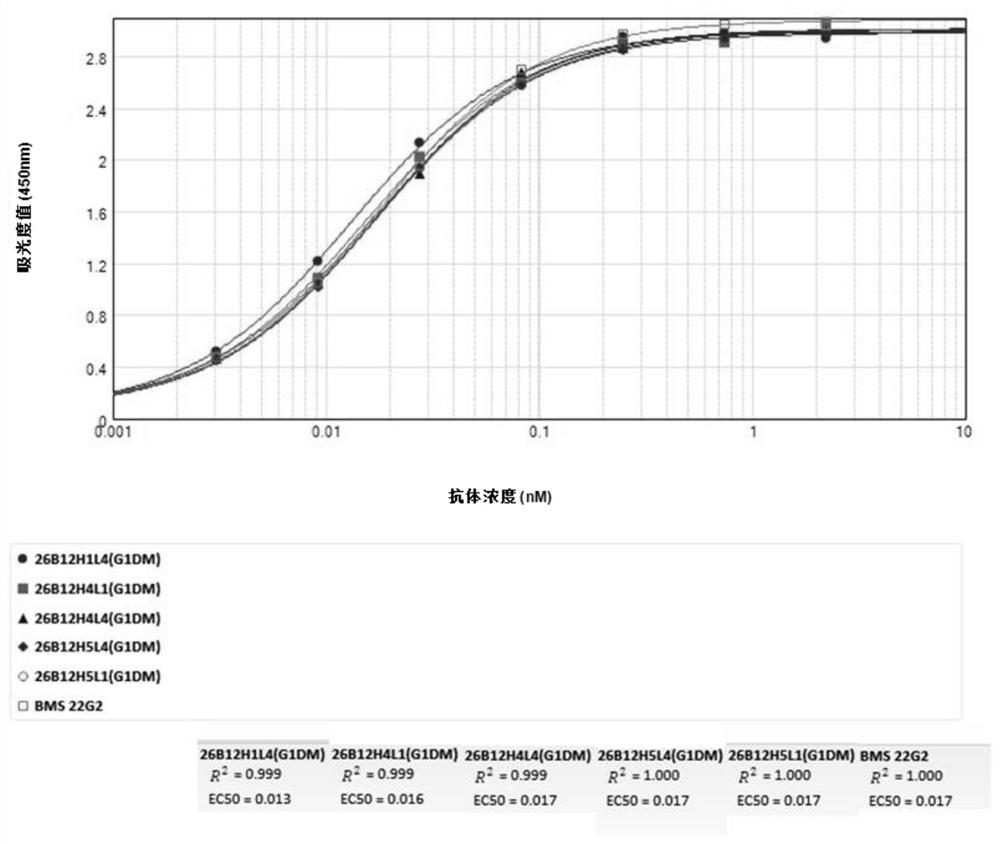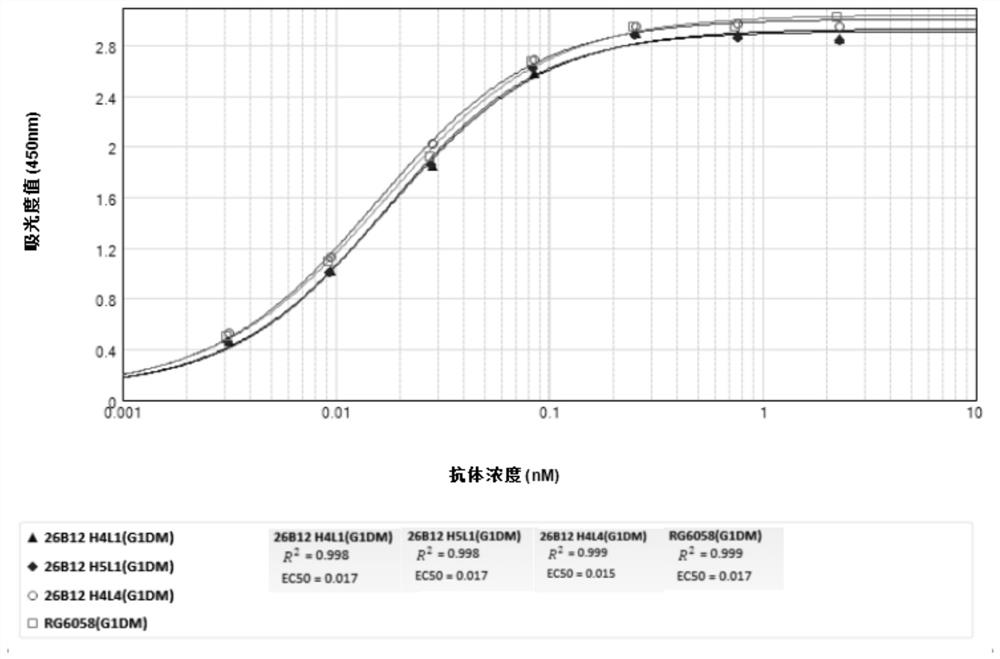Antibodies to tigit and uses thereof
An antibody and antigen technology, applied in the direction of antibodies, antibody medical components, and resistance to vector-borne diseases, etc., can solve problems affecting drug pharmacology, immune cell damage, etc. Effects of T cell activity
- Summary
- Abstract
- Description
- Claims
- Application Information
AI Technical Summary
Problems solved by technology
Method used
Image
Examples
Embodiment 1
[0162] Example 1: Preparation of anti-TIGIT antibody 26B12
[0163] 1. Preparation of hybridoma cell line LT019
[0164] The antigen used to prepare the anti-TIGIT antibody is human TIGIT-mFc (TIGIT is GenbankID: NP_776160.2). Splenocytes from immunized mice were fused with mouse myeloma cells to produce hybridoma cells. Using human TIGIT-mFc as an antigen, hybridoma cells were screened by indirect ELISA method to obtain hybridoma cells that can secrete antibodies that specifically bind to TIGIT. For the hybridoma cells obtained by screening, a stable hybridoma cell line was obtained by the limiting dilution method. The above hybridoma cell lines were named hybridoma cell line LT019, and the monoclonal antibodies secreted by them were named 26B12.
[0165] The hybridoma cell line LT019 was deposited in the China Center for Type Culture Collection (CCTCC) on October 23, 2020, with the deposit number CCTCC NO: C2020208, and the deposit address is Wuhan University, Wuhan, Ch...
Embodiment 2
[0168] Example 2: Sequence Analysis of Anti-TIGIT Antibody 26B12
[0169] The mRNA was extracted from the LT019 cell line cultured in Example 1 according to the method of the Bacteria Total RNA Extraction Kit (Tiangen, Cat. No. DP430).
[0170] cDNA was synthesized according to the Invitrogen SuperScript® III First-Strand Synthesis System for RT-PCR kit instructions, and PCR amplification was performed.
[0171] The PCR amplification product was directly cloned by TA. For specific operation, refer to the pEASY-T1 Cloning Kit (TransgenCT101) kit manual.
[0172] The products of TA clones were directly sequenced, and the sequencing results were as follows:
[0173] The nucleic acid sequence of the heavy chain variable region is shown in SEQ ID NO: 2, and the fragment is 363 bp in length.
[0174] The encoded amino acid sequence is shown in SEQ ID NO: 1, with a length of 121 amino acids.
[0175] The sequence of heavy chain HCDR1 is shown in SEQ ID NO: 3, the sequence of HCD...
Embodiment 3
[0179] Example 3: Light chain and heavy chain design and preparation of humanized antibodies against human TIGIT
[0180] 1. Light and heavy chain design of humanized antibodies 26B12H5L4, 26B12H5L1, 26B12H4L4, 26B12H1L4 and 26B12H4L1 against human TIGIT
[0181] According to the three-dimensional crystal structure of human TIGIT protein and the sequence of antibody 26B12 obtained in Example 2, the antibody model was simulated by computer, and then mutations were designed according to the model to obtain the variable region sequences of antibodies 26B12H5L4, 26B12H5L1, 26B12H4L4, 26B12H1L4 and 26B12H4L1 (antibody constant Region sequence, from the NCBI database, the heavy chain constant region is Ig gamma-1 chain C region, ACCESSION: P01857; the light chain constant region is Ig kappa chain C region, ACCESSION: P01834).
[0182] The designed variable region sequences are shown in Table A below.
[0183] Table A: Variable region sequences
[0184]
[0185] For the above...
PUM
 Login to View More
Login to View More Abstract
Description
Claims
Application Information
 Login to View More
Login to View More - R&D
- Intellectual Property
- Life Sciences
- Materials
- Tech Scout
- Unparalleled Data Quality
- Higher Quality Content
- 60% Fewer Hallucinations
Browse by: Latest US Patents, China's latest patents, Technical Efficacy Thesaurus, Application Domain, Technology Topic, Popular Technical Reports.
© 2025 PatSnap. All rights reserved.Legal|Privacy policy|Modern Slavery Act Transparency Statement|Sitemap|About US| Contact US: help@patsnap.com



